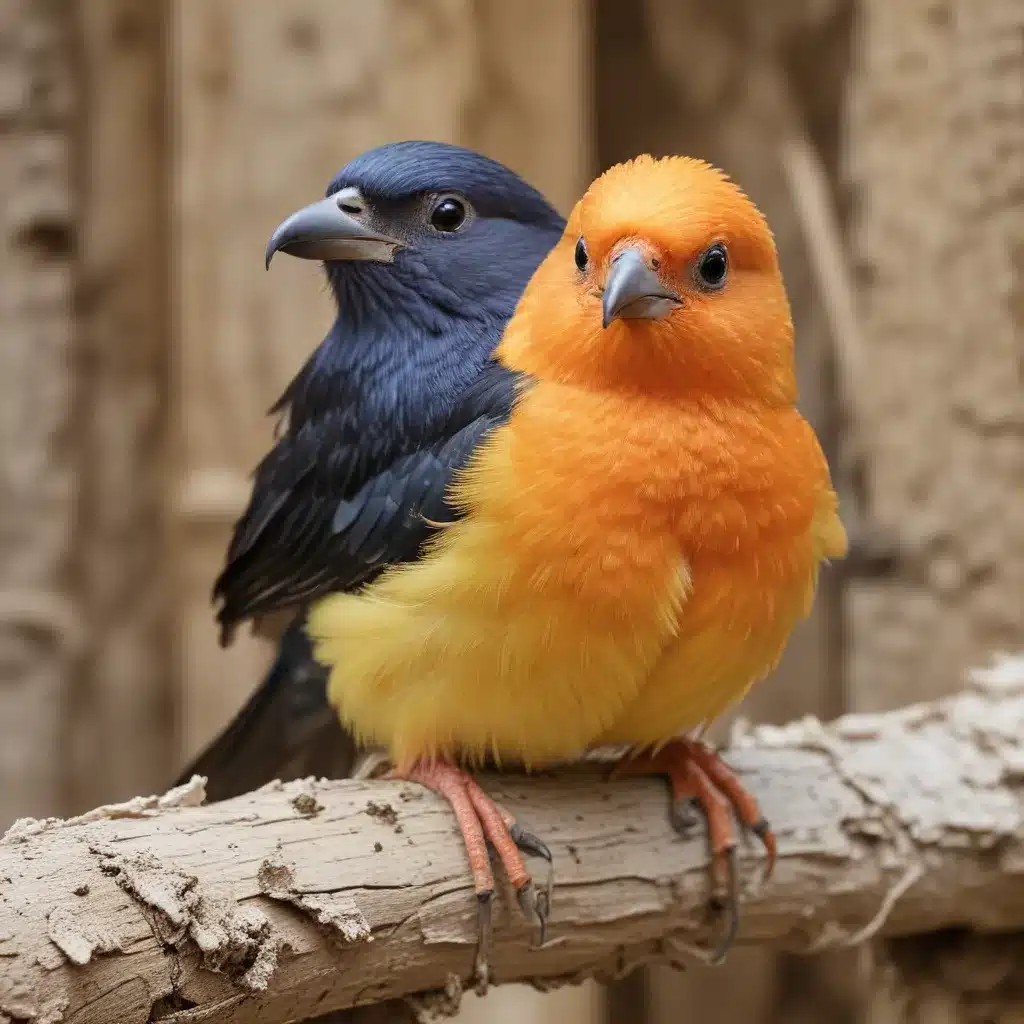
Avian Species and Habitats
Types of Birds
As an experienced avian caretaker and expert in bird species, I’ve had the privilege of working with a diverse array of feathered creatures – from the majestic bald eagle to the charming Carolina chickadee. Each species, with its unique adaptations and behaviors, plays a vital role in the delicate balance of our ecosystems. Understanding the vast array of avian life is the first step in providing effective rehabilitation and rescue services.
Bird Ecology and Environments
Birds inhabit a wide range of environments, from the rugged peaks of the mountains to the serene waters of wetlands. Their habitats are intricately woven into the fabric of nature, providing essential services such as seed dispersal, pollination, and pest control. However, these habitats are increasingly under threat from human activity, climate change, and other environmental stressors. Preserving and restoring avian environments is crucial for the long-term survival of our feathered friends.
Avian Conservation Efforts
Across the globe, dedicated organizations and individuals are working tirelessly to protect and conserve bird species. From monitoring populations to advocating for legislative changes, these efforts are crucial in safeguarding the future of our avian companions. At Mika Birds Farm, we are proud to be a part of this movement, contributing to research, education, and hands-on rehabilitation to ensure that every bird has a fighting chance.
Avian Injuries and Rehabilitation
Common Avian Injuries
In the course of my work, I’ve encountered a wide range of injuries and ailments affecting birds. From broken wings and fractured bones to lead poisoning and respiratory issues, the challenges faced by these resilient creatures can be both complex and heartbreaking. Providing prompt and appropriate medical care is essential in giving them the best possible chance at recovery and release.
Rehabilitation Facilities
Across the country, there are dedicated rehabilitation centers and wildlife sanctuaries that specialize in the care and treatment of injured or abandoned birds. These facilities, often staffed by highly trained professionals and passionate volunteers, offer a safe haven for our feathered friends. At Second Chance Wildlife Center in Maryland, for example, the team provides skilled and compassionate emergency treatment and long-term rehabilitative care to thousands of wild animals each year.
Rehabilitation Techniques
The rehabilitation process for birds can be a delicate and intricate endeavor, requiring specialized knowledge and a deep understanding of avian biology and behavior. From stabilizing injuries and administering medication to providing a nurturing environment and specialized diets, the dedicated caretakers at these facilities employ a wide range of techniques to ensure the best possible outcome for each patient. By closely monitoring the progress of their avian charges, they are able to make informed decisions about the appropriate time for release, maximizing the chances of a successful return to the wild.
Avian Rescue and Rehabilitation Processes
Identification and Assessment
When a member of the public encounters an injured or abandoned bird, the first crucial step is to properly identify the species and assess the situation. This may involve contacting local wildlife authorities or rehabilitation centers, such as Tri-State Bird Rescue & Research in Delaware, for guidance on the appropriate course of action. Experienced professionals can provide invaluable advice on safely capturing the bird and transporting it to a suitable facility.
Stabilization and Treatment
Upon arrival at a rehabilitation center, the bird will undergo a thorough examination and assessment to determine the extent of its injuries or health issues. The dedicated team of caretakers will then work quickly to stabilize the patient, providing emergency first aid, administering medications, and addressing any underlying conditions. This delicate process lays the foundation for the bird’s recovery and eventual release back into its natural habitat.
Release and Monitoring
As the bird’s health and condition improve, the rehabilitation team will gradually introduce it to more natural environments, allowing it to regain its strength and adapt to the challenges of the wild. The ultimate goal is to ensure a seamless transition back to its native habitat, where it can thrive and contribute to the overall health of the ecosystem. Careful monitoring and follow-up assessments help to ensure the bird’s successful reintegration and long-term survival.
The Role of Volunteers and Professionals
Volunteer Opportunities
The rehabilitation and rescue of injured or abandoned birds is a labor of love, often relying on the dedication and hard work of volunteers. These passionate individuals play a crucial role in tasks ranging from animal care and feeding to facility maintenance and community outreach. By getting involved with organizations like Friends of Texas Wildlife, volunteers can make a tangible difference in the lives of countless avian patients.
Professional Expertise
Alongside the tireless efforts of volunteers, the avian rehabilitation and rescue community is supported by a network of highly skilled professionals. Veterinarians, wildlife biologists, and experienced caretakers bring a wealth of knowledge and expertise to the table, ensuring that each bird receives the specialized care and attention it requires. Their dedication and commitment to the well-being of these creatures are truly inspiring.
Funding and Resource Needs
The successful operation of avian rehabilitation and rescue centers is dependent on a steady flow of financial and material resources. From specialized medical equipment and dietary supplements to the construction and maintenance of enclosures, these facilities require significant investments to provide the highest level of care. By supporting organizations through donations, memberships, and participation in fundraising events, the public can play a vital role in sustaining these invaluable services.
As an experienced avian caretaker, I’ve seen firsthand the transformative power of rehabilitation and rescue efforts. Each bird that is given a second chance represents a triumph over adversity, a testament to the unwavering dedication of those who have devoted their lives to the welfare of our feathered friends. By working together, we can ensure that the skies remain filled with the joyful songs and vibrant plumages of birds for generations to come.


